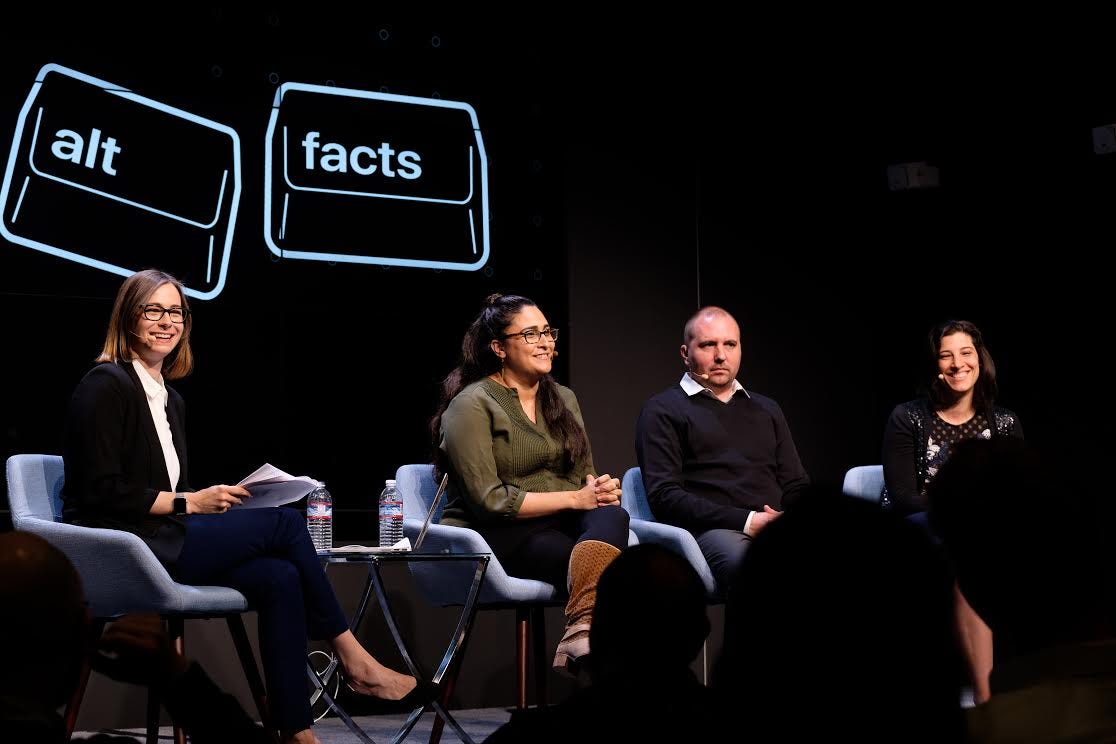
Next time you’re on Twitter, remember this: lies are 70 percent more likely to be retweeted than facts, according to a recent MIT study. That’s because people tend to trust that what their friends and family are sharing is true, making it incredibly easy for falsehoods to spread like a virus.
The good news? Despite all the noise online and all the talk of our being in a post-truth world, most of us still care about finding the truth, and it is still out there. It’s just becoming more and more difficult to discover.
“It feels like online we’re all adrift in a sea of false facts, a tidal wave of deceiving data, and we don’t know what to hold on to,” said Veronica Belmont, host of IRL Podcast, during the show’s first-ever live recording this month at the Commonwealth Club in San Francisco. “The information age became the misinformation age when nobody was looking.”
During the special live season finale ofIRL— Mozilla’s podcast exploring how online life shapes who we are — Belmont and her guests onstage dived into the strange new world of social media misinformation and where we should go from here.

“I wanted to get across that this was a systemic problem,” she said. “Russia was one actor of a whole litany of folks who could use the same systems to do similar things. Since it was a systemic problem, it required a systemic solution.”
The key to misinformation, no matter the source, is confirmation bias, said guest Jestin Coler, founder of DisInfoMedia Inc. and also known as the “King of Fake News,” because he used to make it himself. “Really, it’s just feeding people what they already want to hear. Once you’ve studied what audiences want and you are writing to get to those biases and create those emotional connections with the reader, it’s quite simple, to be honest,” he said.
For journalists, the deluge of misinformation is making their jobs as truth seekers more difficult — and more important — than ever. “I spend a good two-thirds of my time trying to discern what’s real and what’s not. That goes to everything from people sending me emails with all sorts of claims and sources who want to pass things off as real, but they are not,” said guest Sheera Frenkel, who covers “all things cyber” for the New York Times.
This all may be our new reality, but that doesn’t mean we’re helpless — we just need to get more savvy. “It’s not always easy to separate fact from fiction in social media,” said Belmont. “But it’s not impossible to stop the spread of misinformation, at least from your own account.”
You can listen to the full conversation here. If this issue resonates with you and you’re left wanting more, make sure to check out the rest of IRL’s episodes, all dedicated to exploring how complicated online issues affect our real lives in the real world.
This post is sponsored by Mozilla.







